Solar eclipse 2023 live updates: Hundreds travel to Eugene to see 'ring of fire'
The Oregon Coast will be the first spot in the U.S. to get a view of Saturday's annular solar eclipse when the moon will cover about 95% of the sun and create a "ring of fire."
Total and annular eclipses are rare, with annular eclipses being slightly more common. On average, there is one total and one annular solar eclipse every year on Earth. However, solar eclipse paths are statistically most likely to occur over the ocean, so being in the path of totality or annularity is rare.
Here's what you need to know about Saturday's eclipse and where you could see it.
Follow our live coverage here before and during the event.
Saturday, 9:40 a.m.: Photos from 2023 annular solar eclipse in Oregon
Saturday, 9:20 a.m.: Glasses on for eclipse at College Hill Reservoir
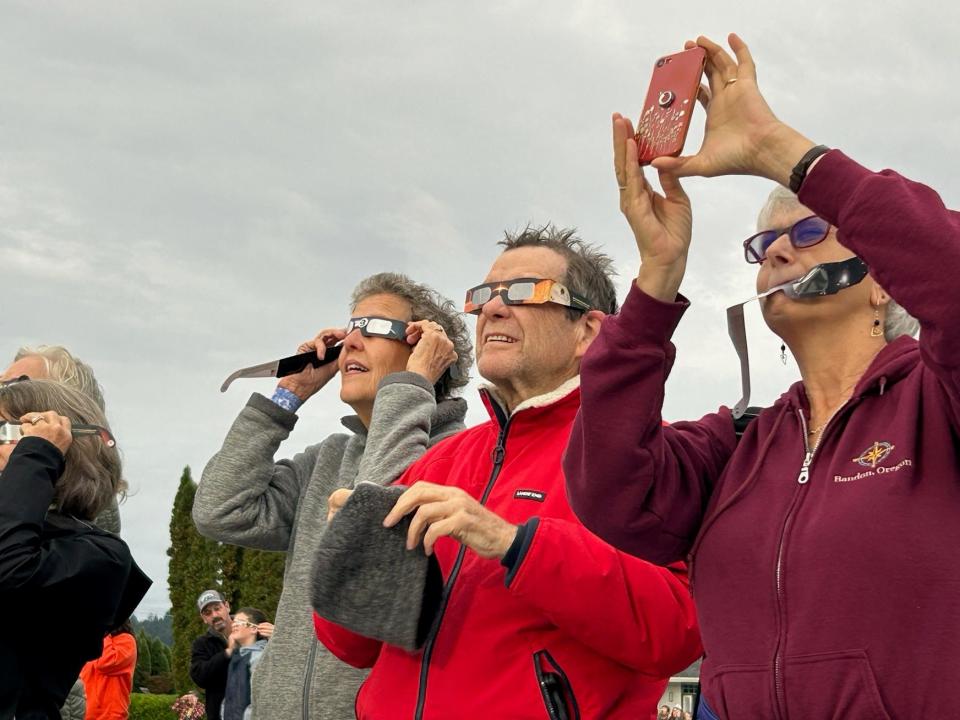
Saturday, 9:15 a.m.: Soccer team readies to see eclipse in Keizer
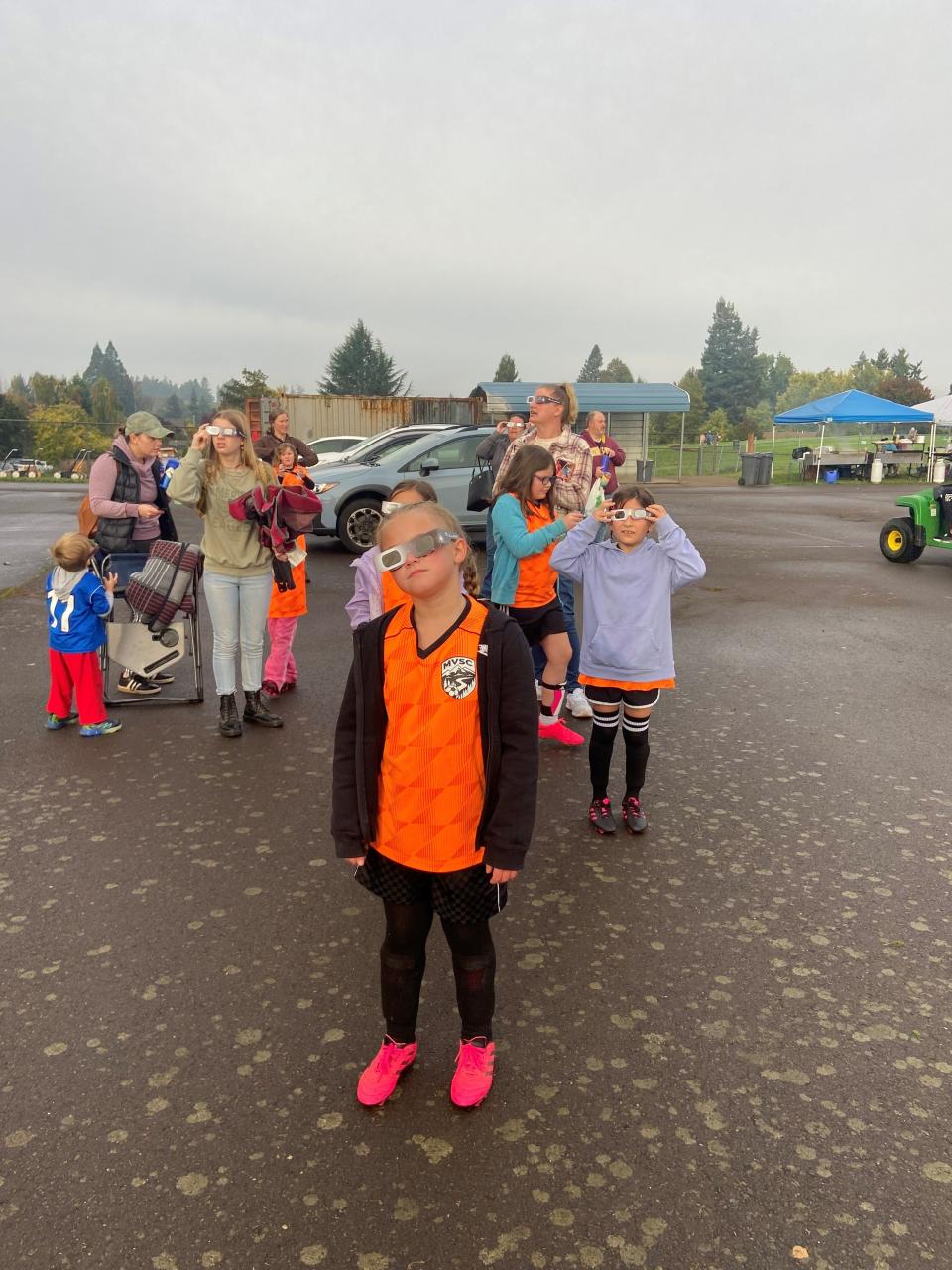
Saturday, 9:10 a.m.: Family travels from LA to Eugene for eclipse
Dipal Thakore and her family flew in from Los Angeles to view the eclipse at the Eugene Science Center.
“Everybody’s been lovely and friendly," Thakmore said. "Whether we see the eclipse or not we’ll still have a great time in eugene. “
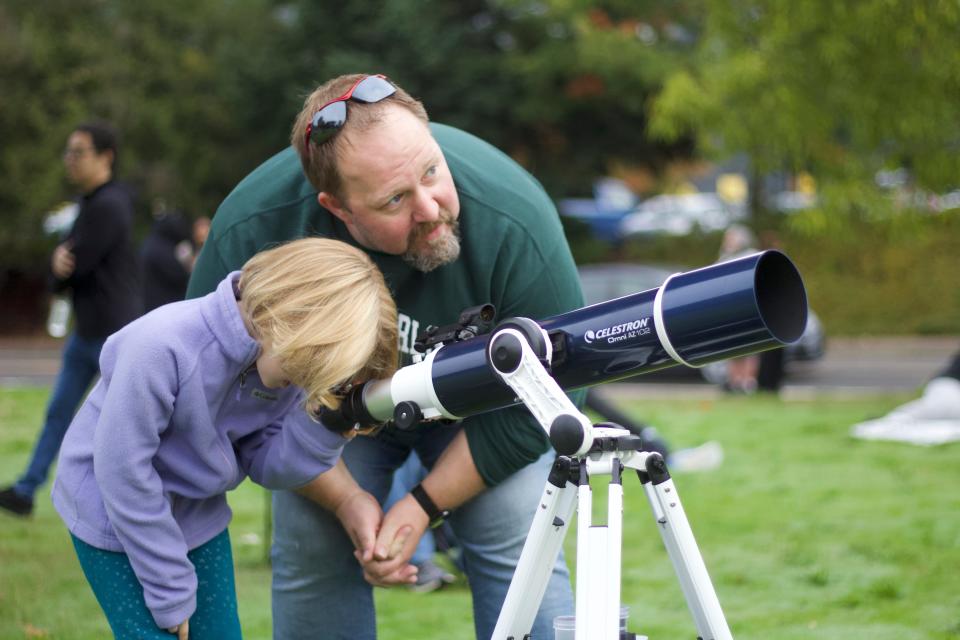
Ryan Rojas and his 6-year-old daughter, Amelia, were feeling more optimistic. The two took turns looking through their telescope. Ryan Rojas lined it up to point at the sun, waiting for the clouds to part.
"We love the science center, so we thought it'd be a great place to hang out with others, even if we don't get to see it," Ryan Rojas said.
People of all ages could be seen waiting for the eclipse.
Crystal Oyervides brought her two sons, Izaiah, 12, and Jeramiah, 8. They had picked a spot near the front of the pack at the science center.
"We just wanted to be a part of this astronomical event," she said. "We didn't want to pass it up."
"It was a fantastic payoff for everyone that came out," said Robert Asumendi, president of the Eugene Astronomical Society. "There's nothing more iconically Oregon than peeking through the clouds at the cosmos.
"We got a quick peek right at the moment (of annularity)."
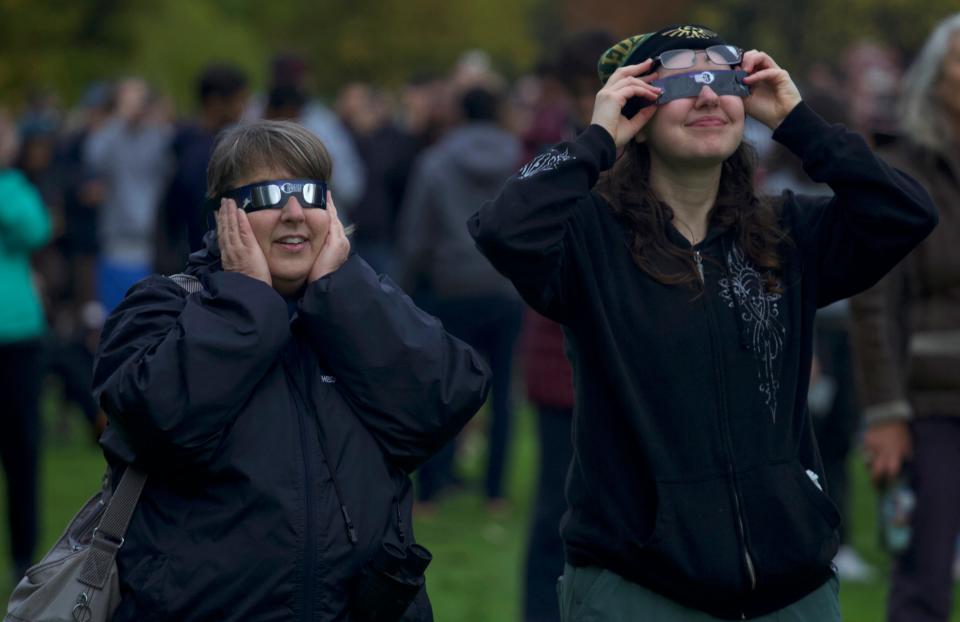
Libby Grace, education director for the science center, said they'd been planning the event for months.
"When you plan an event like this, especially that's so dependent on the weather, there's always that question of are people actually gonna be able to see what they're coming out for?" Grace said. "The clouds just ever so slightly parted. For us to be able to see this really unique, natural phenomenon was just wonderful. It was great to see folks celebrating space science and celebrating nature, and all coming out in a big group to kind of unite around the single event."
"I was nervous until I started hearing the cheering," said Peter Kukla, community engagement director for the science center. "I got goosebumps with when they first started cheering. That, to me, was when I knew that this was a successful event."
Kukla said the ESC sold 500 pairs of glasses the morning of the eclipse. Many others bought glasses prior to the day or brought their own equipment.
Grace mentioned the huge turnout from non-locals. She said there was a group that came from science centers in the Midwest, who are preparing for the total eclipse in April 2024 and wanted to look for inspiration for planning their own viewing party.
"It was really neat as well, not only to be able to have folks travel to see the actual events, but also kind of see what it looks like to engage our community with it," Grace said.
-Miranda Cyr
Saturday, 9:05 a.m.: People gather at College Hill Reservoir
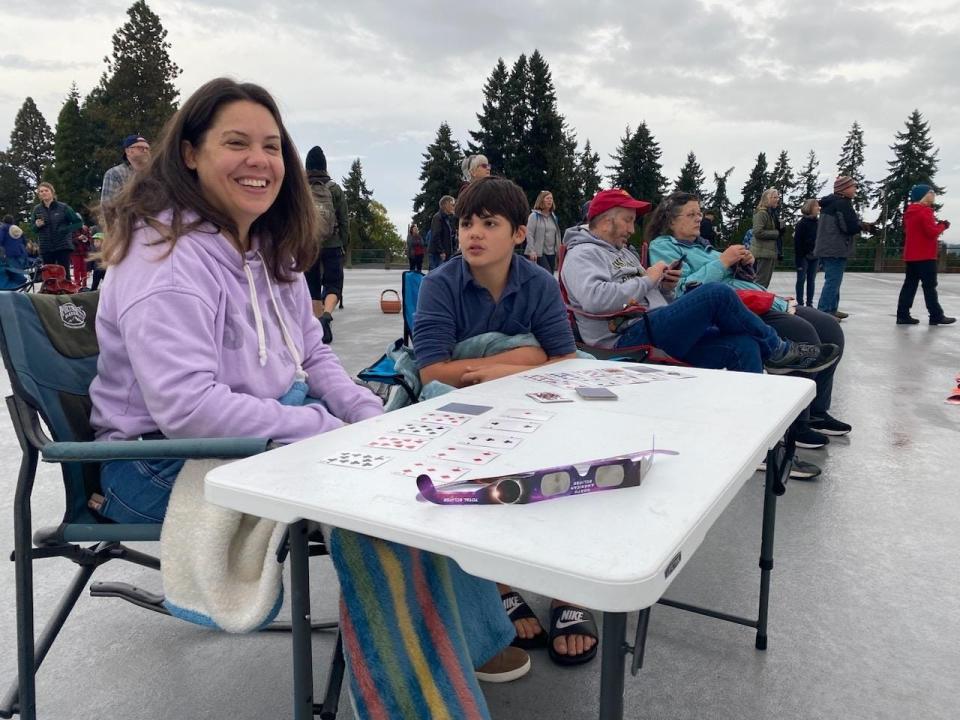
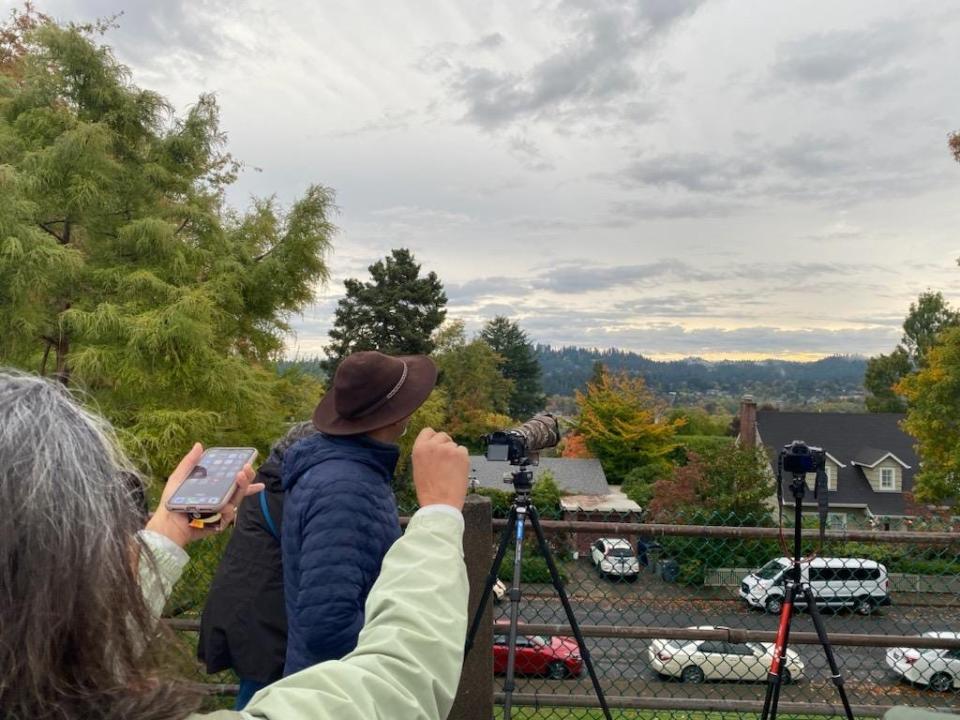
Saturday, 9 a.m.: Eugene Astronomical Society gives update
Robert Asumendi, president of the Eugene Astronomical Society, said “We’re seeing some gaps in the cloud that look hopeful if not outright promising.”
The society will be at the Eugene Science Center during the eclipse.
-Miranda Cyr
Saturday, 8:55 a.m.: People gather to make a photo of eclipse at Crater Lake
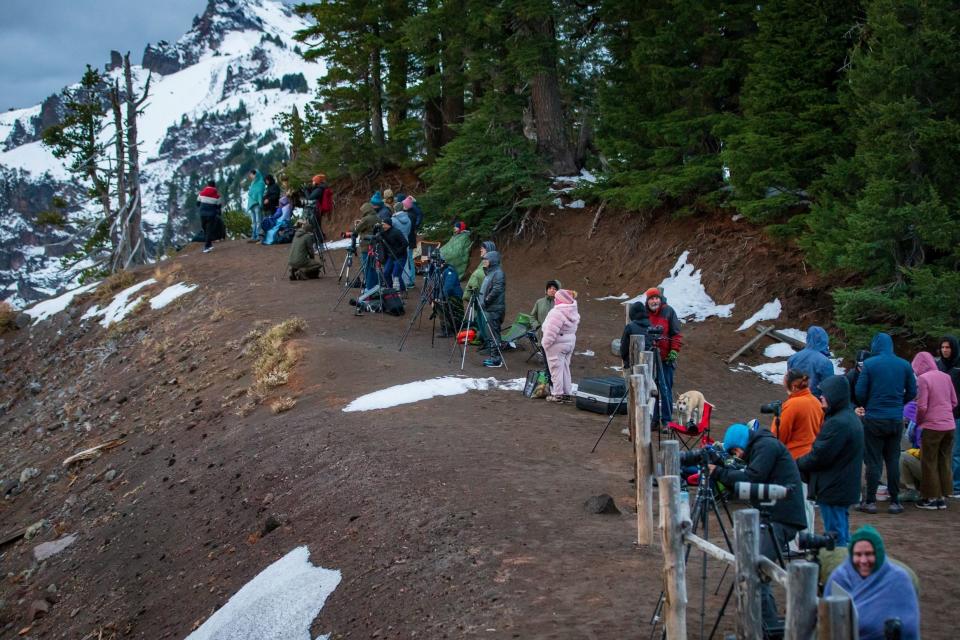
Saturday, 8:50 a.m. NASA launches 'Ring of Fire' annular solar eclipse broadcast
Saturday, 8:45 a.m.: EclipseFest23 provides weather update from Fort Klamath
Saturday, 8:40 a.m. People gather at College Hill Reservoir in Eugene
Hundreds of people, including families and children, are gathering before the eclipse to hopefully get a chance to see it from College Hill Reservoir in Eugene.
-Haleigh Kochanski
Saturday, 8:35 a.m.: Cloudy skies at Salem Saturday Market
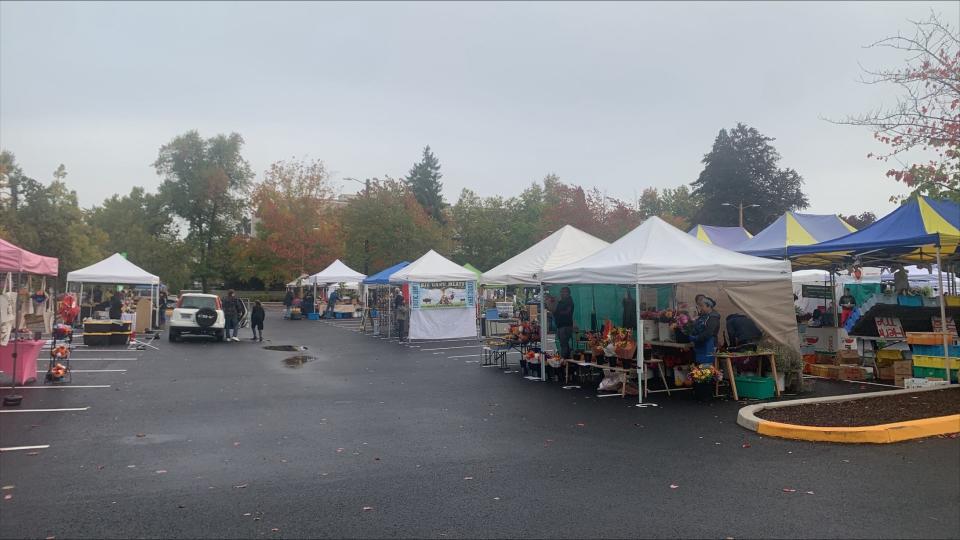
Saturday, 8:30 a.m.: Watch out for traffic
This year’s eclipse is on a college football Saturday. The Oregon State Beavers will be playing at home in Corvallis at 5 p.m. — making for a fun tailgate and eclipse party before the game against UCLA.
The Ducks football team is on the road at Washington in Seattle with kickoff at 12:30 p.m.
Saturday, 8:25 a.m.: Annular vs. solar eclipse
A solar eclipse occurs when the moon passes between the sun and the Earth at a particular angle, blocking the light from the sun and casting a shadow on the Earth.
In the path of a total eclipse, this shadow turns day into twilight, which is what many in Oregon saw on Aug. 21, 2017.
Observing an annular eclipse is somewhat less dramatic, though still cool, astronomers say. The apparent size of the moon’s disc is slightly smaller than that of the sun, so the outer edge of the sun remain visible, known as the “ring of fire.”
The last annular eclipse was visible in Oregon May 20, 2012.
“It just so happens that in this eclipse, the moon is going to be a little farther away from the Earth, and that makes it a little smaller in the sky," University of Oregon astronomy professor Scott Fisher said. "And so when the moon goes in front of the sun, this time, a ring of the sun is going to be visible around the moon, and that's why we call it an annular eclipse because the shape of sun is an annulus."
Saturday, 8:20 a.m.: Photographers, viewers set up at Skinner Butte in Eugene
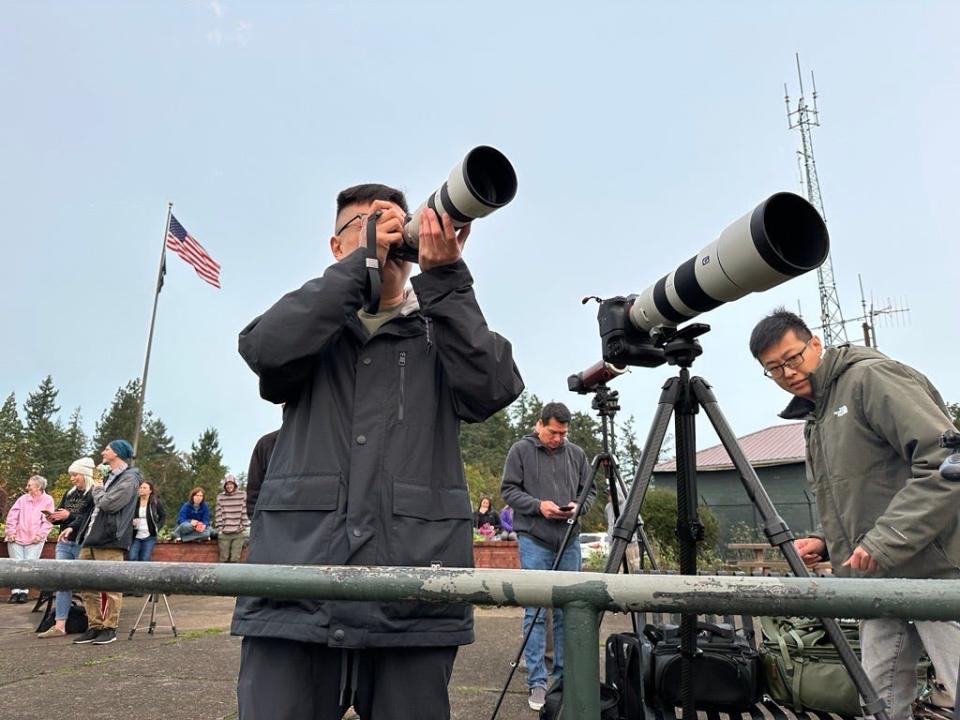
About 300 people have gathered before the eclipse to get their chance to see it and make a photo at Skinner Butte in Eugene.
- Chris Pietsch
Saturday, 8:15 a.m.: Cloudy skies appear at Crater Lake
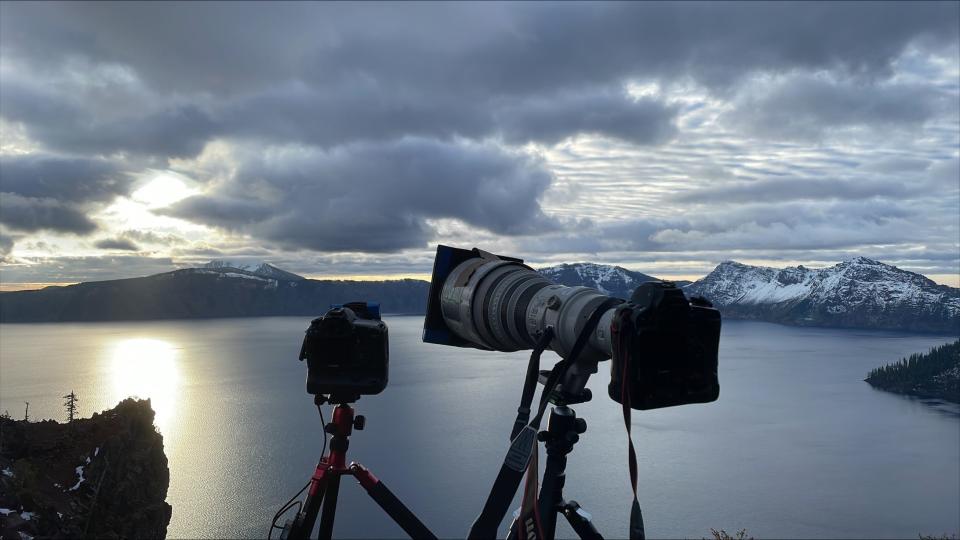
As people gather to view the eclipse at Crater Lake National Park, cloudy skies loom overhead before the eclipse early Saturday morning.
Saturday, 8 a.m.: Eugene Science Center gives visibility update
The Eugene Science Center is anticipating a cloudy morning Saturday, with some breaks in the clouds and poor visibility to see the eclipse, according to a Facebook post.
Staff will still be on hand during the eclipse. "We're getting our Solar Scope ready to go just in case, so feel free to still stop by! Hands-on activities and our public speaker are continuing as planned," the post said.
"In the event there is some visibility, no part of the eclipse is safe to view without proper eye protection! We still have Eclipse Glasses available for sale if you need them," the post said.
Friday, 6 p.m.: Eugene Science Center to give Saturday morning visibility update
The Eugene Science Center will provide a visibility update for the eclipse at 7 a.m. Saturday, according to a Facebook post.
"Cloudy or shine, there will be eclipse-themed activities starting at 8:30 a.m. and a public talk on solar eclipses with LCC professor Richard Wagner in the planetarium at 11 a.m.," the post said.
The science center said even if there is cloud cover staff will have eclipse glasses and a solar telescope if there is a possibility of seeing the eclipse.
Friday, 5 p.m.: What time is the annular eclipse in Oregon?
The eclipse will begin in Oregon shortly after 8 a.m. Saturday, with annularity beginning at about 9:15 a.m.
The eclipse will reach maximum coverage at 9:16 a.m. over the Eugene area, producing near-total darkness. It will appear as if the moon is sliding over the sun, and then clearing off the sun, completely restoring daylight by about 10:30 a.m.
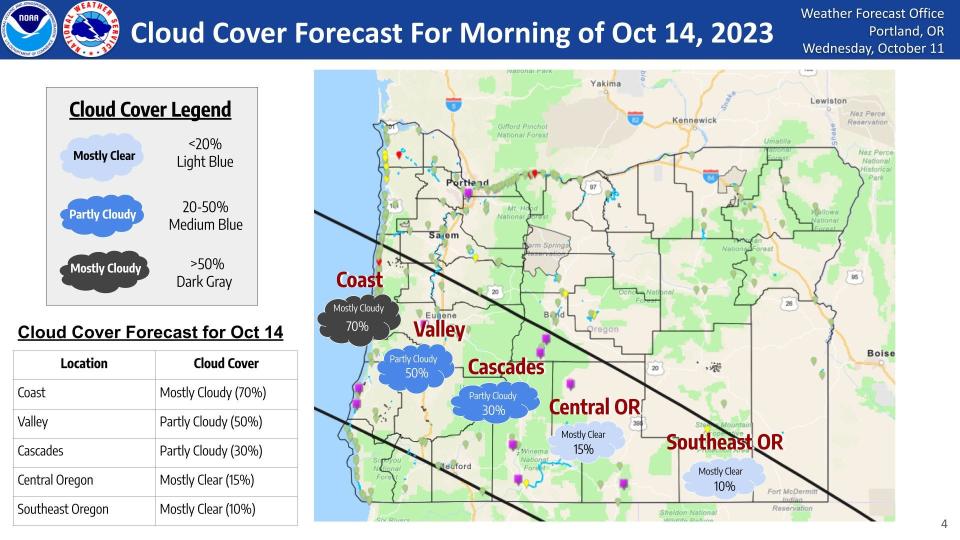
Friday, 4:15 p.m.: Less cloud cover could mean better Oregon eclipse viewing
The forecast for viewing Saturday’s annular solar eclipse has improved dramatically, according to the National Weather Service in Portland.
Earlier this week, predictions about thick cloud cover suggested Oregonians would get mostly shut out.
Forecasters are now predicting 50% cloud cover — or partly cloudy conditions — in the Willamette Valley, including in Albany, Corvallis and Eugene, which are all in the “path of annularity” that will showcase the most dramatic views.
Chances for clear views of the moon crossing in front of the sun look even better further east, with 30% cloud cover forecasted in the Cascade Range and mostly clear conditions in central and southeast Oregon. That would make towns such as Klamath Falls and Lakeview some of the best places to see the eclipse.
-Zach Urness
Friday, 2:30 pm: Watch safely with solar eclipse sunglasses
Do not look at the eclipse with your bare eyes, to prevent serious damage.
Because the sun is not completely blocked by the moon during an annular eclipse, it is never safe to look directly at the sun without a special-purpose solar filter, according to NASA.
Sunglasses, no matter how dark, are not safe for watching the annular eclipse, NASA says. Viewers should use safe solar or eclipse glasses, or a handheld solar viewer.
For crafty folks, there are ways to make your own eclipse-viewing materials out of a shoebox, aluminum foil and some patience. Visit eclipse.aas.org/eye-safety for tips and tutorials.
This article originally appeared on Salem Statesman Journal: What time is the eclipse tomorrow? How to watch it in Oregon

